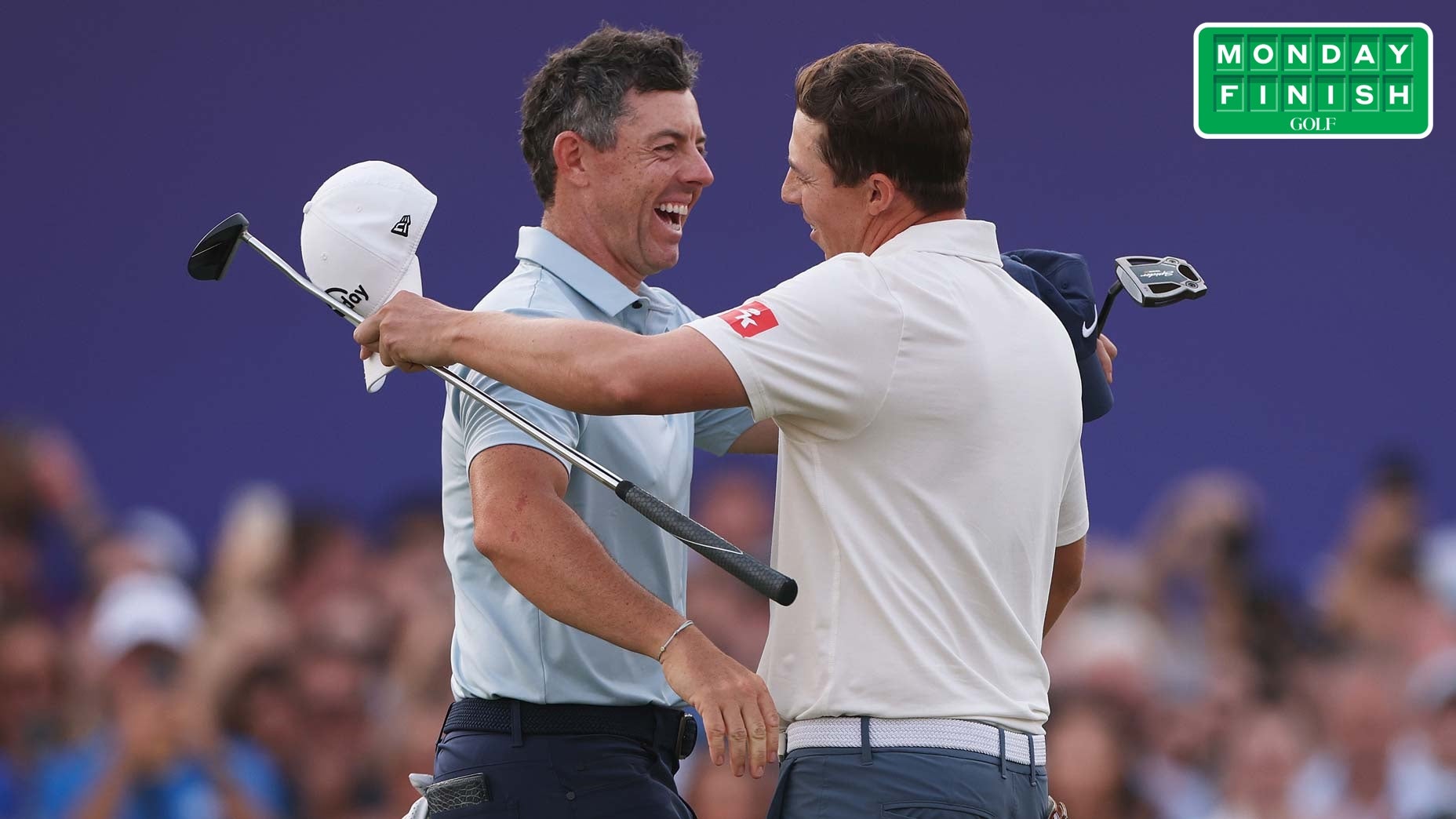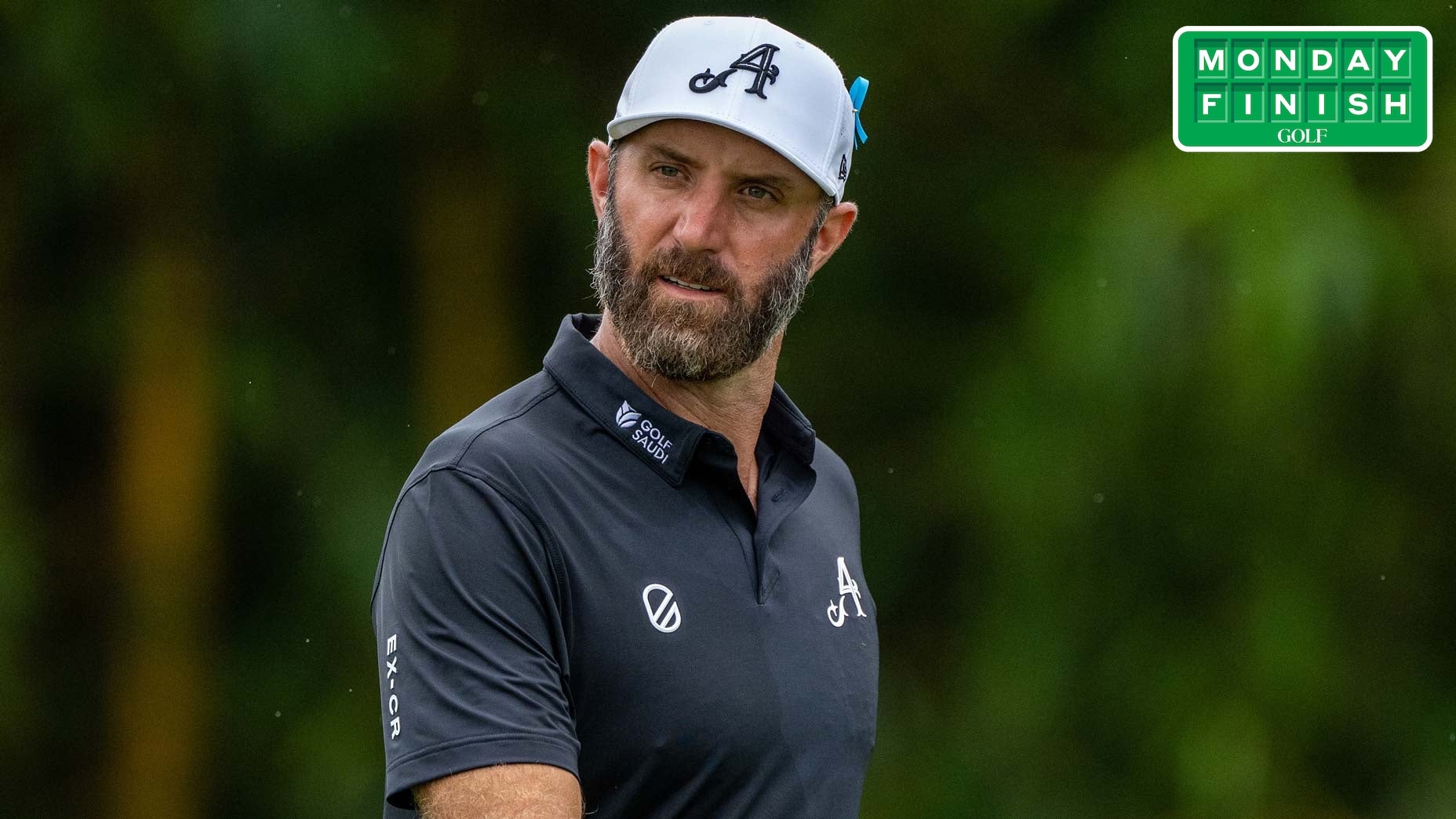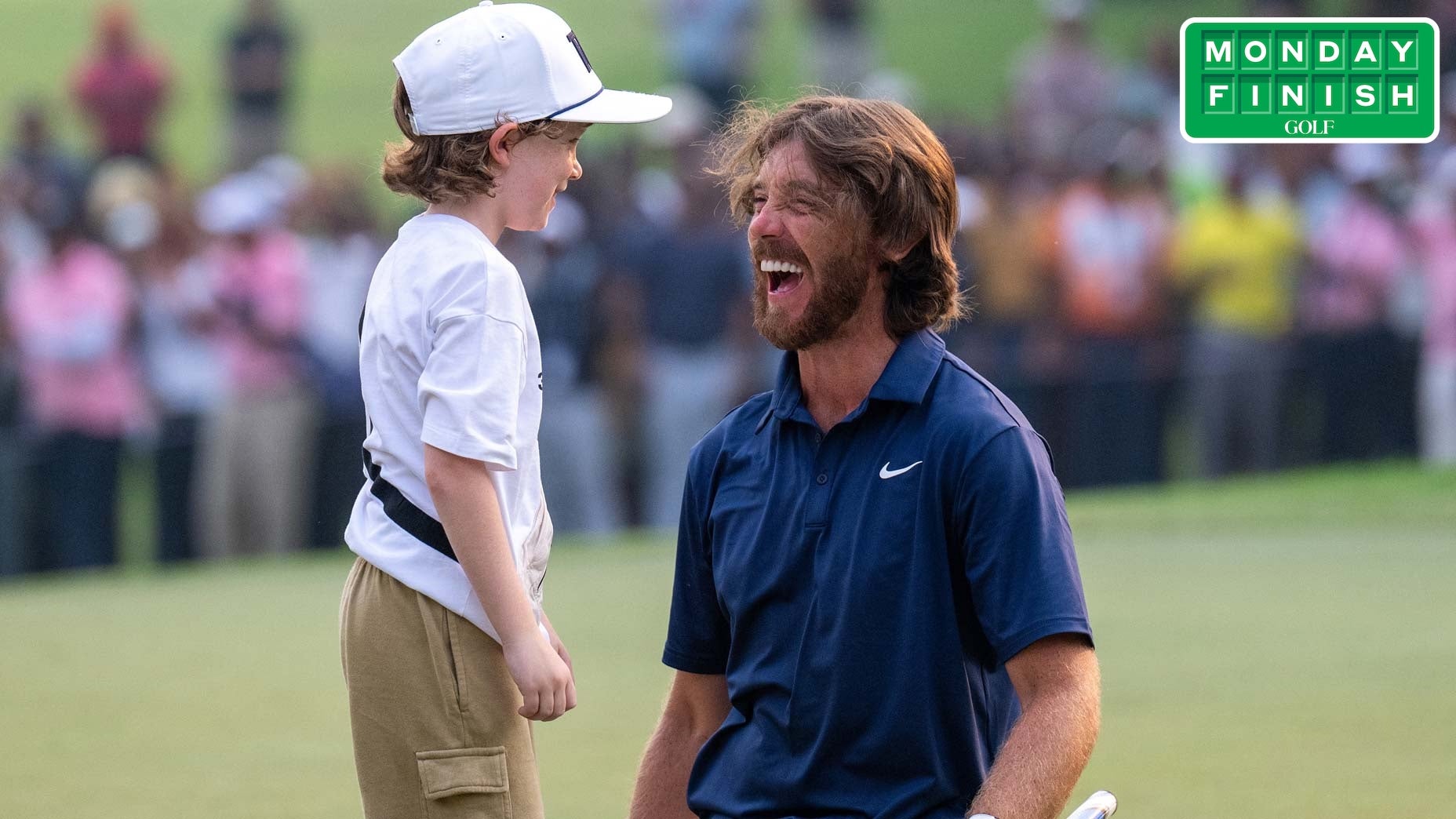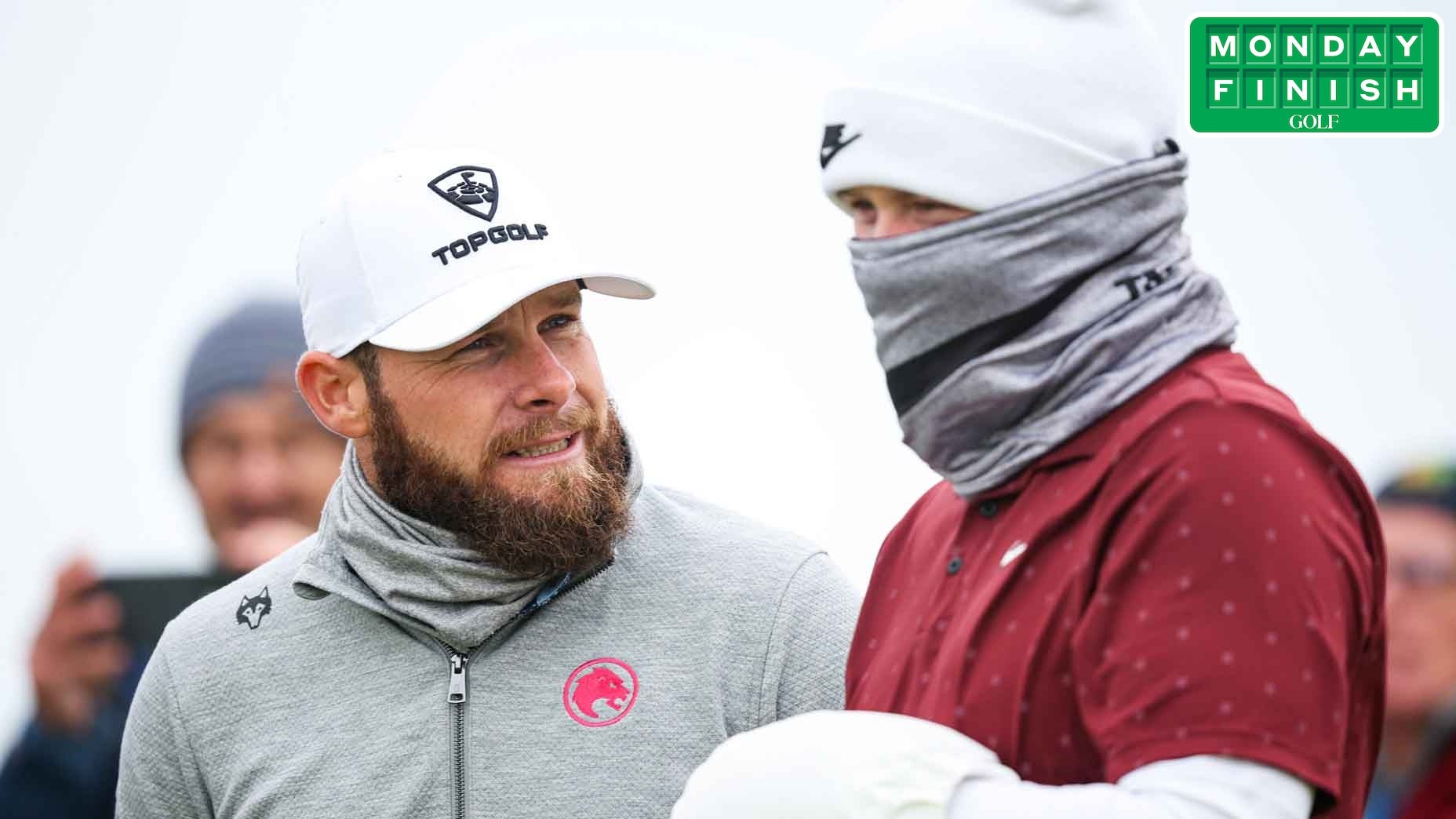First of all, I promise the headline above isn’t meant as a shot at NBC’s commercial load. Others have that story cornered. But the whole point of attending tournaments in person is to hear and see and smell and taste the bits that would be inaccessible from the couch. For this week’s Monday Finish, here are 10 of ’em I’d like to bring to you, dear readers:
1. Complex LIV dynamics
On Monday, Phil Mickelson addressed the media. It was a dreadful session; Mickelson didn’t look or sound like himself and seemed determined to say as little as possible about his decision to join LIV’s breakaway tour. Nobody enjoyed it but Mickelson seemed to enjoy it least of all.
On Tuesday Jon Rahm addressed the media. Rahm gave an eloquent rebuttal to the merits of the breakaway league, dismissing its 54-hole shotgun start as “not a tournament” and pointing out that if he had an extra $400 million, his life actually wouldn’t change much at all. It was Rahm at his most reflective and very best.
“For a lot of people, I’m not going to lie, those next three, four years are worth basically their retirement plan they’re giving them,” Rahm said. “It’s a very nice compensation to then retire and sail off into the sunset. If that’s what you want, that’s fine.”
This Jon Rahm answer is absolutely the best PGA Tour defense I’ve seen
— Dylan Dethier (@dylan_dethier) June 14, 2022
pic.twitter.com/zFZIbQJhdX
That last bit may have been directed at several of Rahm’s longtime Ryder Cup teammates. But it could also have applied to Mickelson, who has made it clear he’s interested in playing less golf for more money in his remaining years.
But after Rahm’s presser, something interesting happened: He went and played a practice round with Mickelson. That’s hardly new; Phil’s brother Tim was Rahm’s golf coach at Arizona State and then left that coaching role to take over as Rahm’s agent. Tim has since become Phil’s caddie. I followed the group for a couple holes and each man seemed wholly occupied with his own individual preparation. There wasn’t much time for chatter and they spent very little time in conversation. But lest I think they’d spent the entire round this way, Getty Images later revealed plenty of fist-bumping and pleasant exchanges, complicating the narrative.

That’s the point: All these narratives are complex. Rory McIlroy, chief PGA Tour loyalist, is friends and essentially neighbors with chief LIV defector Dustin Johnson (not to mention Ian Poulter, Sergio Garcia, Graeme McDowell and others). Max Homa hasn’t suddenly severed his friendship with LIV signee Talor Gooch; they played a practice round, too.
“It doesn’t make me mad that he’s playing a different tour, it just makes me sad that I’m not going to get to play with him as much,” Homa said on the No Laying Up podcast. “But I’m stil going to talk to him a bunch and maybe it’ll make it fun when I see him out here at majors if this is the only time that I’ll end up playing with him.”
2. Rumors flying
I wrote about the rumor mill more extensively here, but golf’s rumor mill is operating at an unprecedented level. Everybody wants to be fully in the know, but here’s the catch: nobody actually is! The situation with players jumping to LIV is so fluid that you could have correct information that suddenly isn’t correct just a short time later. Media were querying players about their intentions — but players were asking media, too.
The departure of Abraham Ancer, the 20th-ranked golfer in the world, came down via a Mexican TV station during Sunday’s final round. Based off the chatter around the course all week, an exodus is continuing. The PGA Tour is holding a meeting at 7:30 a.m. on Tuesday at the Travelers (early start!) to announce its next move. Some golfers are thinking of defecting after the season or post-Presidents Cup. But until you hear specific names confirmed, I wouldn’t put much stock in a pro “considering” the leap. They’ve all considered it, to some extent. The question is what happens next.
3. Justin Thomas, Red Sox fan?
I attended Justin Thomas’ Monday press conference and was curious if he’d had a chance to watch Jay Monahan’s remarks during Sunday’s Canadian Open broadcast. Thomas obviously hadn’t watched Monahan live — he was in contention in said broadcast at the time — but I figured he may have stumbled across a clip later.
“No,” he said. “Sorry.”
A dead end. I hadn’t prepped a backup question so the only thing that sprung to mind was Thomas’ Boston fandom. I pivoted. Where does that come from?
Thomas is from Kentucky but said that his uncle is from the area and would send him Red Sox gear every time Christmas or a birthday rolled around.
“I had a lot of jerseys, tee shirts, a lot of hats, a lot of blankets,” he said. Whose jerseys? They rolled off his tongue.
“I had a Nomar [Garciaparra],” he said. “I had a Manny [Ramirez]. And my first Red Sox jersey was a David Ortiz jersey. I think I even had a [Jason] Varitek one.”
For his birthday one year, Thomas’ uncle took him to a Red Sox-Yankees game at Yankee Stadium.
“I remember because I had my Nomar jersey on, and I was getting yelled at and cussed at and given the finger and I was 9 years old. That was my first introduction to the Yankees-Red Sox rivalry.”
And that’s how a boy from Kentucky ends up with a David Ortiz “34” in his email address.
4. The tiniest, greatest golf hole
No. 11 is a teensy par-3 that played to just 108 yards on Sunday. (It tipped out at 141 yards on Saturday.) The hole looked terrific on TV, I should add. But it looked even better in person. It’s tough to capture the elevation change on a two-dimensional screen, but this hole dropped several stories from tee to green, creating an interesting dynamic for pros trying to manage their ball flight and their spin rates. Missing the green on almost any side meant trouble.
The U.S. Open’s best hole is also its tiniest — and most devilishBy: James Colgan
The result? No. 11 averaged over par for the week. Even on Sunday, when the best golfers in the field played the flip-wedge hole from its shortest yardage, there were more bogeys (16) than birdies (12). Scottie Scheffler made double bogey there on Saturday and bogey on Sunday; he finished just a short behind the winner, Matthew Fitzpatrick. Good golf holes don’t have to be long to be challenging.
5. 18th-hole ovations
Early in the week, it was natural to wonder how fans would treat Phil Mickelson. (Spoiler alert: Very well!) By the end of the week it was a treat just to be near the bleachers as fan favorites walked up No. 18.
“That walk up 18 was really cool for me,” Joel Dahmen said post-round. “They actually knew my name and were hollering quite a bit. That was fun.”
Rory McIlroy got reverential treatment on his walk up the finisher, too. The Open Championship often channels this sort of stadium feeling on its 18th holes, but course setups typically dictate whether fans can line both sides of a hole. Here? No problem. Ro-ry! Ro-ry! Ro-ry!
The crowd may have been largest and loudest when Fitzpatrick officially sealed his victory, but there was no matching the march of Keegan Bradley, New England’s son, as he finished off an emotional T7. Like Bradley, I grew up thinking I’d play for the Red Sox in Fenway Park. I got chills as the chants began.
Unbelievable feeling https://t.co/pH17twneO6
— Keegan Bradley (@Keegan_Bradley) June 20, 2022
6. Happy and Smylie
Smylie Kaufman, he of the Spring Break Boys and the Masters final-round pairing, hasn’t made a cut on the PGA Tour since 2019. His future in professional golf was uncertain. But the 30-year-old popped up at the PGA Championship to do featured group coverage. And he appeared again at the U.S. Open to report for NBC Sports.
I’ve only heard bits and pieces of Kaufman’s work, though I’ve enjoyed what I’ve been exposed to. But in person, there’s no mistaking just how [ducks] smiley he looks. Check out that grin!
👑👑👑 https://t.co/AHRHQ0kUr8 pic.twitter.com/ft6q0XcmwZ
— claire rogers (@kclairerogers) June 19, 2022
It’s easy to imagine that a former top-50 player who lost his game would feel sheepish or awkward returning as a member of the media. But Kaufman seems to have no such reservations. The crowds loved him, the players flocked to him and he seemed at ease in a headset. I doubt this is the last we’ll see of him.
7. The happiest father
U.S. Open Sunday means Father’s Day. And while I was standing by the putting green with a couple colleagues just before the leaders teed off, who strode through but Gerry McIlroy. We’d met before but only briefly, so I said hello. Few people seem to enjoy life the way Gerry does; he worked multiple jobs in Holywood, N. Ireland to offer his son the best life he could, and now that his lot has changed he has taken full advantage. A Seminole logo adorned his vest; he’s the club’s most popular member. It’s possible he plays golf as often as his son.
“I’ve got nothing to do and all day to do it,” he said, beaming at the idea. It’s easy to see where Rory gets his neat turn-of-phrase, too.
8. The truth of Zalatoris’ putting stroke
It’s no secret that Will Zalatoris’ putting stroke gets a little sketchy over short putts. The broadcast keyed in on his struggles to keep the putter head on plane from a short distance. And while he missed a couple shorties on the weekend, no doubt efforts he’d like to try again, he avoided three-putting all week and actually made most of those little wobblers, no matter how it looked.
— Golf Monthly (@GolfMonthly) June 19, 2022
The truth of Zalatoris’ putting performance is actually far more interesting. His PGA Tour profile would tell you that he’s No. 158 on Tour in strokes gained putting. But that doesn’t count major championships, which is a key omission. The folks at DataGolf have broken it down and Zalatoris has lost strokes to the field with his putter in nine out of 11 PGA Tour non-major starts this season (only counting events with available data).
In the three majors he has been a different guy on the greens, gaining significant strokes on the green, per DataGolf’s estimations. It’s a jarring visual:
This is crazy: In 9 of 11 non-majors this season, Will Zalatoris has been a below-average putter. But in all 3 majors he has been WAY above average.
— Dylan Dethier (@dylan_dethier) June 20, 2022
(per @DataGolf) pic.twitter.com/NdCP8KcWjH
We know from his PGA Tour stats that even when he’s not putting particularly well from short range, Zalatoris is a terrific lag putter, ranking seventh on Tour in approach putts. Perhaps slippery major championship greens reward that sort of touch more. But whatever the stats say, it was interesting being in a small group of reporters with Collin Morikawa after he’d finished his final round. Morikawa and Zalatoris are each generational ball-strikers who are statistically below-average putters. So what does he think of Zalatoris over short putts?
“I pray for him,” he said. “I’m not going to beat around the bush. I’ve said it since college: Anything outside that eight-to-10 foot zone, it’s as smooth as anyone else’s stroke. But we’ve seen some squirrelly putts. Not that I’m the best putter, not that I don’t have squirrellyness too, but it’s a little — I think we all get on our toes when we see it.
“But look, you just have to get it done, that’s what I’ve learned. If you just have one week, that’s all you need. And just because we’re not the best in putting doesn’t mean that he’s not going to get it done.”
9. In the end, it’s all just weather
My colleague Luke Kerr-Dineen regularly makes fun of me that my golf stories are actually just weather stories. In his mind I write about golf only as a means of conveying what it was like outside that day. He might be right. But on Saturday the weather was all I could think about. Golf is an outdoor game, which means the largest day-to-day variables will be things like wind, precipitation and temperature.
Duh, you might be saying to yourself. But I thought Saturday’s brutal conditions were a perfect illustration of what cold and wind do to the most dialed-in golfers on the planet. Non-golfers might not think that some gusts would have such a strong effect. Big-time golfers are just amazed the wind doesn’t derail them even more. It’s been a joy that we’ve gotten at least one day of challenging conditions in each major this year, because it’s a joy to watch these guys get uncomfortable and see how the game completely changes.
It rained overnight on Saturday and the wind laid down, setting up a slightly gentler finale, allowing for some lower scores. Birdies became a more dominant storyline than bogeys.
I guess I’ll keep writing about the weather.
10. More New England golf, please!
The first golf tournament I ever attended was the Deutsche Bank Championship at TPC Boston. I went with my mom, the two of us wonderfully naive as to how difficult it would be to just go watch Tiger Woods when ten thousand of our new best friends would be trying to do the exact same thing. But the entire experience was terrific, trekking the grounds in pursuit of exciting golf and exciting golfers, eager to see how they acted and ready to emulate how they swung.
The first golf tournament I covered in this job was the 2017 Dell Technologies Championship, the same tournament — just with a new sponsor. It felt right that the Tour would have a stop in the country’s greatest sports town. It also felt fitting to have an end-of-summer tournament in New England. The never-ending PGA Tour schedule struggles to mark the passage of time, but nowhere is that passage felt more keenly than Labor Day in New England, when the leaves begin to fall and there’s a chill in the evening air and golfers ready themselves for a long, dark offseason.
This U.S. Open wasn’t at the end of summer — Tuesday post-tournament marks the summer solstice. This is a celebration of summer instead. But it made me happy to see kids on property getting a taste of their first golf event, too, staring wide-eyed at the pros, plotting how to one day take their jobs.
I just hope they don’t take mine.











